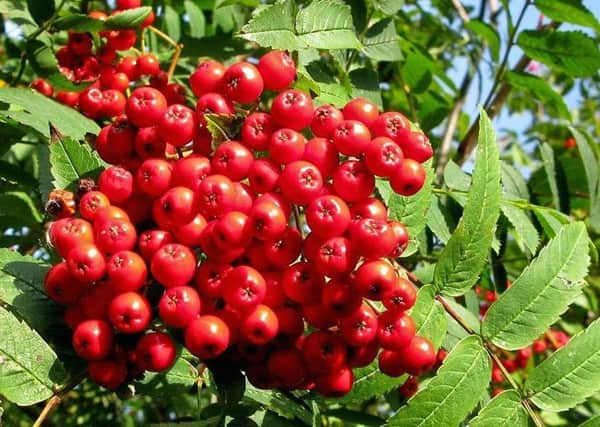Country Diary: Fruits of autumn are now ripe for picking


However, if you have no more blackberry and apple pies this season, do turn to elderberries as a substitute. These fruits are relished by birds, and although not so popular with humans when eaten raw, are delightful when stewed with apples. The berries are ripe when the clusters begin to turn upside down. Cut whole clusters from the stems. Pick only those that are not wrinkling or beginning to ‘melt’. Wash well, and strip them from the stalks with a fork. They’re grand added whole to apple pies.
Rowan berries hang in large clusters of small red or orange berries, from trees planted along the edges of residential estates. They’re at their best between August and November, but are best picked in October before they become mushy. Don’t let the birds strip them first. They can be made into a jelly with the addition of a little chopped crab apple to provide the pectin. The jelly – only sampled on one occasion, is dark orange in colour, with a flavour similar to marmalade.
Advertisement
Hide AdAdvertisement
Hide AdAre you now counting the weeks to Christmas? If you enjoy a drink of sloe gin, it will be time to pick your sloes immediately after the first frost. We don’t really want to think about frosts yet, but this makes the sloe skins softer and more permeable.
Sloes are the fruit of blackthorn, a bush growing abundantly in woods and hedgerows – especially on Scarborough’s Castle Hill.
It’s a stiff shrub, growing up to about 12 feet in height, with long black thorns and oval leaves. The flowers are pure white and resemble snow in early spring before any leaves appear.
The fruit can be difficult to see at first, as the sloes are small and round, and dark blue-black in colour. It’s hard to believe that this tart, acid berry is the ancestor of all our plums.
Advertisement
Hide AdAdvertisement
Hide AdPick your sloes after the first frost, and your sloe gin should be ready to serve all your friends this Chrismas. Wearing gloves to avoid the sharp, stiff spines, pick about a pound of berries. If there hasn’t been a frost, pierce the skins of each berry with a skewer. This will help the juices unite more easily.
Weigh the sloes and mix with an equal weight of sugar. Half fill your bottles with this mixture. Pour gin into the bottles until they’re almost full. Seal tightly, and store for at least two months.
Shake them occassionally to help dissolve and disperse the sugar. The result? A brilliant, deep pink liquer for Christmas.